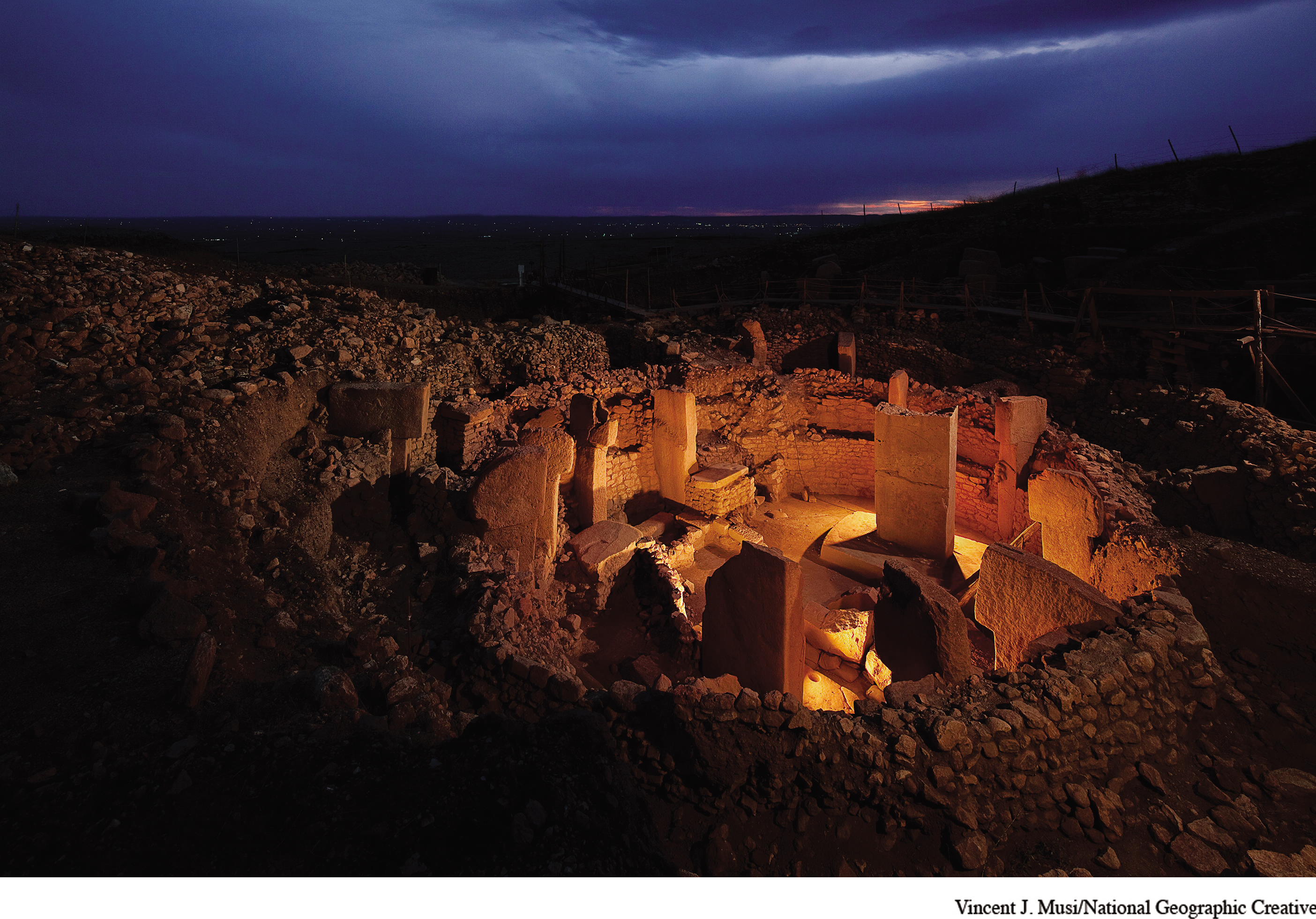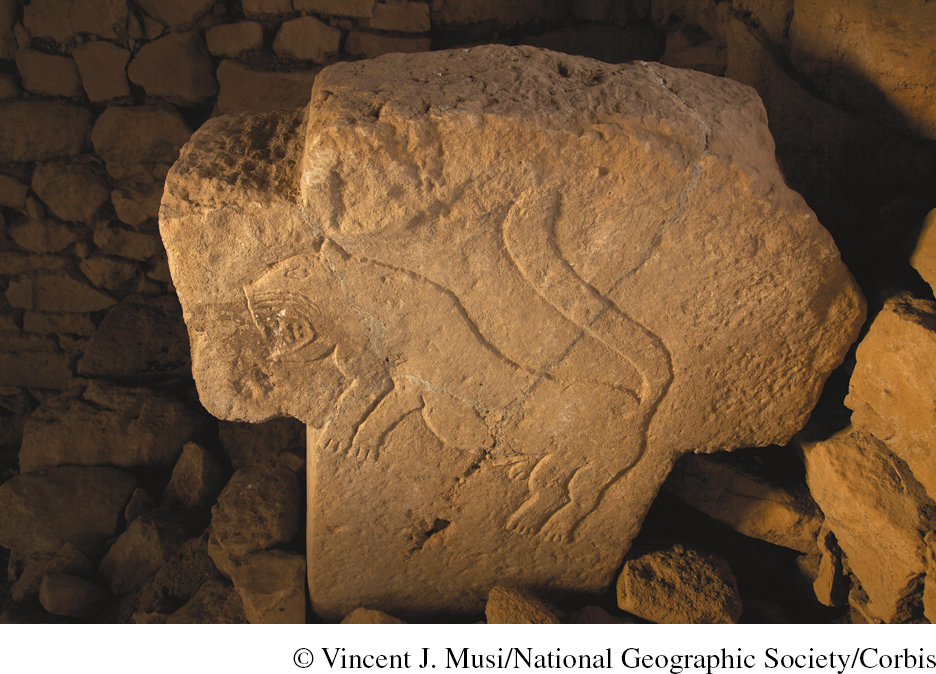ZOOMING IN: Göbekli Tepe: Monumental Construction before Agriculture

Göbekli Tepe. photo: Vincent J. Musi/National Geographic Creative
Perhaps the most stunning archeological discovery of recent decades comes from the site known as Göbekli Tepe, or “potbelly hill,” in southeastern Turkey, which has been under excavation since the mid-1990s. Dating to almost 12,000 years ago, this twenty-five-acre complex currently consists of about 200 massive limestone pillars, some as tall as eighteen feet and weighing as much as fifty tons. Carved in a T shape, perhaps to represent human beings with arms outstretched, they were arranged in a set of walled circles or rings. Five such circles have been unearthed so far, with another twenty or so awaiting excavation. Gracefully carved wild animals—gazelles, snakes, boars, foxes, lions, scorpions, vultures—decorate the pillars. Göbekli Tepe was probably a ceremonial or religious site, for little evidence of long-term human habitation has been found. Dubbed “the world’s oldest temple,” it likely attracted worshippers or pilgrims from many miles around and may well have served as a place of ritual burials, although no actual graves have yet been found.
The most amazing feature of Göbekli Tepe involves those who constructed it, for they were clearly gathering and hunting peoples, living at least part of the year in settled villages. No evidence of agriculture or domesticated animals has emerged. Rather, the tens of thousands of animal bone fragments found at the site suggest that those who built the complex dined on wild gazelles, pigs, sheep, deer, vultures, and ducks, as well as wild plants native to the area. Thus Göbekli Tepe represents a kind of monumental construction long associated only with agricultural societies and civilizations, forcing scholars to rethink their understanding of the late Paleolithic era.

Carved lion on a stone pillar at Göbekli Tepe. photo: © Vincent J. Musi/National Geographic Society/Corbis
How did such pre-agricultural peoples with only the simplest of stone tools carve, transport, and erect such enormous structures? What kind of social organization facilitated their remarkable achievement? What did this complex mean to those who created it? Since stones and bones tell us little about these matters, many mysteries remain.
Although Göbekli Tepe was the product of pre-agricultural peoples, the process of its construction may well have played a role in the breakthrough to farming in this region. Klaus Schmidt, the chief archeologist at the site for many years, argued that the need for food to supply those who built and maintained this massive religious complex may well have triggered the development of agriculture in the area. Certainly, some of the earliest domesticated wheat has been located just twenty miles away and at roughly the same date. If this connection holds, it suggests that the human impulse to worship collectively played a significant role in generating the epic transformation of the Agricultural Revolution.
Scholars have long believed that large-scale construction, settled village life, and institutional religion were generated by agricultural societies. The finds at Göbekli Tepe and elsewhere now suggest that these achievements may have figured in the creation of those farming communities. Perhaps they were precursors to agriculture rather than products of it.
Questions: In what ways has Göbekli Tepe forced historians to rethink earlier views? How does this archeological discovery affect your own understanding of the Paleolithic era?

